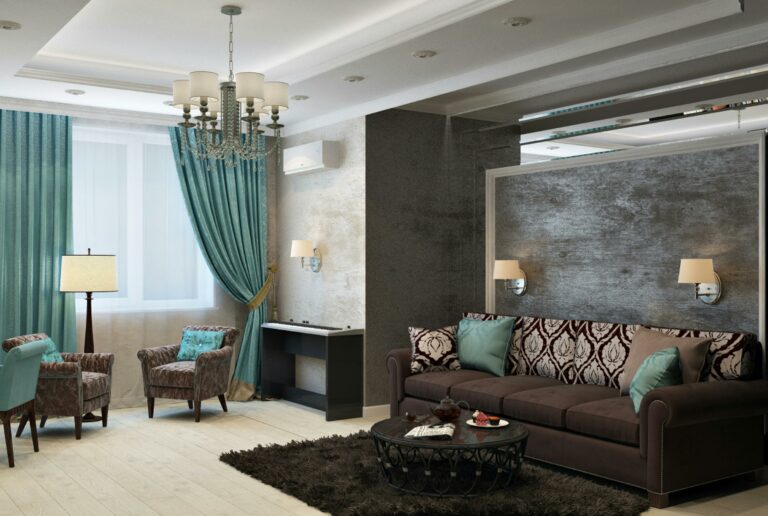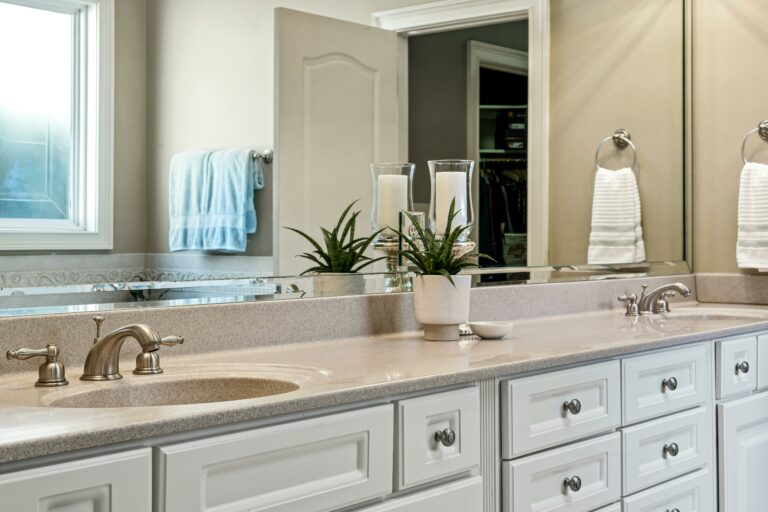Open Concept Living : Architectural Ideas for Spacious and Airy Homes in 2023
Welcome to the world of open concept living! In this article, we will explore the architectural ideas and design concepts that can help you create a spacious and airy home. Open concept living has become increasingly popular in recent years, as it offers a range of benefits including enhanced natural light, increased social interaction, and flexible living spaces. Whether you are renovating your current home or building a new one, incorporating open concept design principles can transform your living experience.
Gone are the days of compartmentalized rooms and isolated spaces. Open concept living breaks down barriers and allows for a seamless flow between different areas of the home. By eliminating unnecessary walls and partitions, you can create a sense of connectivity and openness throughout your living space. This not only allows for better communication and interaction between family members, but it also maximizes the use of space and opens up the opportunity for creative design solutions.
In this article, we will discuss the benefits of open concept living, explore strategies for maximizing space and flow, delve into kitchen design ideas, talk about creating zones within an open space, incorporate natural elements, address privacy and acoustics, and consider accessibility and universal design. So, whether you’re looking to create a more inviting living area, a functional and stylish kitchen, or a home that is inclusive and accommodating for all, we’ve got you covered.
Let’s dive in and discover how open concept living can transform your home into a haven of spaciousness and airiness.
Table of Contents
Benefits of Open Concept Living

Open concept living has become increasingly popular in modern home design. This architectural concept involves creating a seamless and flowing space by removing interior walls and partitions, resulting in a larger, more open area. There are several benefits to adopting an open concept living style in your home, including:
Enhanced Natural Light and Views
One of the major advantages of open concept living is the abundant influx of natural light. Without walls obstructing the flow of light, the entire space is bathed in sunlight, creating a bright and airy atmosphere. This not only makes your home feel more welcoming and vibrant, but it also helps to reduce the need for artificial lighting during the day.
Additionally, open concept living allows for unobstructed views. Without walls separating different areas of the house, you can enjoy panoramic views of your surroundings from any point within the space. Whether it’s a beautiful garden, a scenic landscape, or even just keeping an eye on your children playing in the living room, open concept living ensures that you never miss out on the view.
Increased Social Interaction
By eliminating walls, open concept living encourages social interaction and connectivity among family members and guests. With the removal of barriers between the kitchen, dining area, and living space, it becomes easier to engage in conversations and activities with everyone in the room. Whether you’re preparing a meal while chatting with your family or entertaining guests during a dinner party, open concept living allows for seamless socializing.
Flexible and Versatile Spaces
Open concept living provides you with the opportunity to have flexible and versatile spaces. Without the restrictions of walls, you can easily adapt your living area to suit your needs and preferences. Whether you want to rearrange your furniture layout, create a designated workspace, or accommodate larger gatherings, open concept living allows for easy customization of your space.
With an open floor plan, you can also keep an eye on children while attending to other tasks, making it ideal for families. Additionally, this flexibility can be particularly beneficial for individuals with mobility challenges, as it allows for easy maneuverability throughout the space.
Embracing open concept living in your home can have numerous benefits, from enhancing natural light and views to promoting social interaction and providing versatile spaces. By removing interior walls and adopting a more open and flowing layout, you can create a spacious and inviting living space that meets the needs of modern living.
Maximizing Space and Flow

In an open concept living space, maximizing space and flow is essential to create a seamless and well-designed environment. Here are some architectural ideas to help you make the most of your open concept home:
Elimination of Interior Walls
- Removing interior walls can greatly enhance the feeling of spaciousness and promote better circulation within the space.
- By eliminating walls, you can create a seamless flow between different areas of your home, such as the living room, dining room, and kitchen.
- This open floor plan allows for better interaction and connection between family members and guests.
Strategic Placement of Furniture
- Proper placement of furniture is crucial in maximizing space and flow in an open concept living area.
- Furniture should be arranged in a way that creates distinct zones without obstructing the overall openness of the space.
- Avoid placing furniture directly against walls to create an open and inviting atmosphere.
- Focus on using furniture pieces that are proportional to the size of the room to ensure optimal flow and functionality.
Optimal Flooring and Lighting
- Choose flooring materials that seamlessly connect different areas of the open space.
- Using the same flooring throughout the space creates visual continuity and enhances the feeling of spaciousness.
- Pay attention to lighting by incorporating a combination of natural light and artificial lighting sources.
- Large windows and skylights allow for ample natural light, making the space feel more open and airy.
- Supplement with recessed lighting, pendant lights, and floor lamps to provide adequate illumination throughout the space.
By implementing these design strategies, you can maximize space and flow in your open concept living area, creating a harmonious and functional environment for you and your family.
Kitchen Design for Open Concept Living

Functional Layouts
- Kitchen Triangle: A classic kitchen design principle is the “kitchen triangle,” which establishes efficient workflow between the sink, stove, and refrigerator. In an open concept space, it is essential to position these elements in a way that allows for easy movement and access, without obstructing the flow of the space.
- Island or Peninsula: Consider incorporating an island or peninsula into your kitchen design, as it not only provides extra counter space and storage but also serves as a natural divider between the kitchen and living area. This can create a boundary while still maintaining a sense of openness.
Seamless Integration with the Living Area
- Match Materials: To create a cohesive and harmonious look, use similar materials and finishes in both the kitchen and living areas. For example, if your living area features hardwood floors, carry that flooring into the kitchen to create a seamless transition.
- Continuity in Cabinetry: Use the same cabinetry style throughout the open concept space to maintain consistency. This creates a unified look and helps to tie the kitchen into the overall aesthetic of the living area.
Smart Storage Solutions
- Built-in Pantry: If space allows, consider incorporating a built-in pantry in your kitchen. This will provide ample storage for bulky items, keeping your kitchen organized and clutter-free.
- Hidden Storage: Utilize smart storage solutions, such as pull-out drawers, corner carousels, and vertical shelving, to maximize storage in your kitchen. This ensures that everything has its place, making it easier to keep the space tidy.
By implementing these design ideas, your kitchen will blend seamlessly with the open concept living space, ensuring that it remains functional, stylish, and welcoming.
Creating Zones within an Open Space

In an open concept living space, it’s important to create distinct zones within the larger area to provide structure and define different functions. By effectively creating zones, you can maintain a sense of organization and purpose while still enjoying the benefits of an open and airy environment. Here are some ideas on how to create zones within an open space:
Using Area Rugs and Furniture Placement
- Area rugs: Utilize area rugs to visually delineate separate spaces within the open floor plan. Place a rug under the seating area to define the living room or family room.
- Furniture placement: Arrange furniture strategically to define different zones. For example, position the sofa and coffee table to create a living area, and use a dining table and chairs to establish a dining space.
Half Walls and Room Dividers
- Half walls: Install half walls to create a physical separation between zones while still maintaining an open feeling. Half walls can provide a subtle boundary without blocking natural light or restricting the flow of the space.
- Room dividers: Another option is to use room dividers, such as decorative screens or bookshelves. These can be functional and visually appealing, while still allowing natural light to filter through.
Differentiating with Flooring and Lighting
- Flooring: Use different flooring materials to distinguish between zones. For example, you could use hardwood flooring in the living area and tile in the kitchen or dining area. This distinction can help visually separate the spaces.
- Lighting: Utilize different lighting fixtures to emphasize specific zones. Pendant lights above the dining table or a chandelier in the living area can create a focal point and differentiate the spaces.
By incorporating these techniques, you can create distinct zones within your open concept living space, providing a sense of purpose and organization while still maintaining the overall openness and flow of the room. Remember to consider your personal preferences and needs when designing the zones, ensuring they are functional and conducive to your lifestyle.
Also read; Elevate Your Home’s Architecture with Sustainable Design Elements in 2023
Incorporating Natural Elements

When it comes to open concept living, incorporating natural elements into the design can have a significant impact on the overall ambiance and aesthetics of the space. Natural elements not only bring a sense of serenity and tranquility but also help to create a connection between the indoors and outdoors. Here are some ways you can infuse your open concept living space with the beauty of nature:
Large Windows and Glass Doors
One of the easiest and most effective ways to incorporate natural elements into your open concept living area is by installing large windows and glass doors. These features not only allow an abundance of natural light to flood your space but also provide stunning views of the surrounding landscape. By opening up your home to the outdoors, you create a seamless transition between the interior and exterior, making the space feel more spacious and airy.
Indoor Gardens and Greenery
Introducing indoor plants and greenery is another fantastic way to bring nature into your open concept living area. Plants not only add a touch of freshness and vibrancy but also help to purify the air and improve indoor air quality. You can opt for potted plants placed strategically around the space or consider creating a dedicated indoor garden area. Vertical gardens or hanging planters are also great options for maximizing space while adding a natural touch.
Natural Materials and Textures
When choosing furniture, flooring, and decor for your open concept living area, opt for natural materials and textures. Wood, bamboo, rattan, and stone are excellent choices for creating a warm and inviting atmosphere. Incorporate these materials into furniture pieces, flooring options, and even accent walls. Additionally, consider using natural fibers like cotton, linen, and jute for upholstery, curtains, and rugs. These materials not only add a touch of nature but also create a cozy and inviting environment.
By incorporating natural elements into your open concept living space, you can create a harmonious and inviting atmosphere that promotes calmness and relaxation. The key is to strike a balance between functionality and aesthetics, allowing nature to seamlessly blend with the overall design.
“Nature always wears the colors of the spirit.” – Ralph Waldo Emerson
Remember, your goal is to bring the beauty of nature indoors and create a connection with the outside world. Whether it’s through large windows, indoor gardens, or natural materials, these elements will enhance the overall ambiance and make your open concept living space truly come alive.
Designing for Privacy and Acoustics

When it comes to open concept living, one concern that often arises is the lack of privacy and the potential for noise disturbances. However, with some thoughtful design choices, it’s possible to create spaces that offer both privacy and acoustic insulation without compromising the open and airy feel of the layout. Here are some tips for designing for privacy and acoustics in an open concept living space:
1. Strategic Placement of Built-in Shelves and Cabinets
- Purpose: Built-in shelves and cabinets not only provide practical storage solutions but also act as effective sound barriers. They can help to break up the space and create pockets of privacy within an open layout.
- Tips:
- Place shelves or cabinets strategically to create visual and acoustic separation between different areas.
- Opt for shelves with solid backs that can act as sound-absorbing panels.
- Add books or other objects to shelves to help absorb sound waves and reduce echoes in the space.
2. Utilizing Curtains or Sliding Screens
- Purpose: Curtains and sliding screens are versatile tools that can be used to create temporary partitions, add privacy when needed, and help control sound transmission.
- Tips:
- Install curtains or sliding screens between different areas of the open space to provide privacy when desired.
- Choose heavy or layered curtains for better sound insulation.
- Consider using double-sided curtains that have sound-absorbing material on one side.
3. Soundproofing Solutions
- Purpose: Soundproofing materials can go a long way in reducing noise transmission and creating a more peaceful and private environment within an open concept living space.
- Tips:
- Use sound-absorbing materials on walls and ceilings to minimize echoes and reverberations.
- Install soundproofing insulation in the walls to deaden sound transmission.
- Consider using soundproofing curtains or acoustic panels to further enhance the soundproofing qualities of the space.
Remember, creating privacy and acoustic insulation in an open concept living space is all about finding the right balance between openness and separation. By incorporating these design elements, you can enjoy the benefits of an open layout while still enjoying the privacy and quietness you desire.
Accessibility and Universal Design

When it comes to designing homes, one important aspect that cannot be overlooked is accessibility and universal design. Creating spaces that are accessible to people of all ages and abilities not only ensures inclusivity but also adds value to the overall functionality of the home. In this section, we will discuss some key considerations for incorporating accessibility and universal design principles into open concept living spaces.
Wide Doorways and Hallways
- Key element: Wide doorways and hallways.
- Reason: Easy navigation and maneuverability for individuals with mobility aids, such as wheelchairs or walkers.
- Benefits:
- Allows for a smoother flow between rooms.
- Enhances accessibility and independence.
- Provides a sense of spaciousness and openness.
Adaptable Furniture and Fixtures
- Key element: Adaptable furniture and fixtures.
- Reason: Flexibility to cater to the changing needs of individuals.
- Benefits:
- Accommodates different height requirements.
- Allows for adjustable seating, tables, and countertops.
- Promotes independence and comfort for everyone.
User-Friendly Technology
- Key element: User-friendly technology.
- Reason: Integration of smart home technology that is accessible for all.
- Benefits:
- Voice-activated systems for controlling lighting, temperature, and entertainment.
- Smart home devices designed with user-friendly interfaces.
- Increased convenience and ease of use for everyone.
Universal design principles go beyond just providing accessibility features. It’s about creating spaces that are intuitive, comfortable, and convenient for everyone, regardless of age or ability. By incorporating these design elements, you can enhance the overall livability and functionality of your open concept living space.
“Universal design is not just about accessibility, it’s about making design inclusive and user-friendly for all.”
Also read; The Perfect Blend: Balancing Function and Aesthetics in Your Home Design in 2023
Conclusion
In conclusion, open concept living offers numerous benefits for creating spacious and airy homes. It enhances natural light and views, increases social interaction, and provides flexibility in designing versatile spaces. By eliminating interior walls, strategically placing furniture, and optimizing flooring and lighting, you can maximize space and flow in your home.
When it comes to kitchen design in open concept living, functional layouts, seamless integration with the living area, and smart storage solutions are key to creating an efficient and stylish space. Creating zones within an open space can be achieved through the use of area rugs and furniture placement, half walls and room dividers, and differentiating with flooring and lighting.
Incorporating natural elements such as large windows and glass doors, indoor gardens and greenery, and natural materials and textures brings a sense of harmony and tranquility to your open concept home. Designing for privacy and acoustics can be achieved through strategic placement of built-in shelves and cabinets, utilizing curtains or sliding screens, and implementing soundproofing solutions.
Additionally, considering accessibility and universal design principles by incorporating wide doorways and hallways, adaptable furniture and fixtures, and user-friendly technology ensures that your open concept home is inclusive and easy to navigate for everyone.
Open concept living is a popular architectural trend for creating spacious and airy homes. By implementing these ideas and considerations, you can design a home that not only looks beautiful but also enhances the overall livability and functionality of the space.
Product Mention:
If you’re looking for stylish and functional furniture for your open concept living space, check out our collection of modern and versatile pieces at Arkitecture Today. From sleek modular sofas to multifunctional storage solutions, we have everything you need to create your dream open concept home. Click here to explore our range of products.
Frequently Asked Questions
- What is open concept living?
Open concept living refers to a design concept that eliminates unnecessary walls and barriers in a home, creating a seamless flow between different living areas and promoting a spacious and airy feel. - What are the advantages of open concept living?
Open concept living offers several advantages, including increased natural light, improved social interaction, better traffic flow, and a sense of spaciousness. It also allows for versatile use of space and easier entertaining. - Are there any disadvantages of open concept living?
While open concept living has its benefits, it may also have some drawbacks. One potential disadvantage is a lack of privacy, as there are no walls to separate different areas. Additionally, noise and odors can easily spread throughout the space. - How can I create an open concept living space in my home?
To create an open concept living space, you can start by removing unnecessary walls or partitions, creating a flow between different areas like the kitchen, living room, and dining room. Using consistent flooring and paint colors can also enhance the sense of openness. - Are there any design tips for decorating an open concept living area?
When decorating an open concept living area, it’s important to create visual cohesion between different zones. Use furniture placement, rugs, and lighting to define separate areas within the space. Additionally, choose furniture and decor that complement each other in terms of style and color.







